Articles Common Ankle Injuries
We have compiled a list of common ankle injuries. It is important to accurately diagnose and identify the cause of these injuries as this will direct treatment to ensure the best outcomes.
Common Ankle Injuries- Ligament Sprains
An ankle sprain arises when the ligaments are stretched beyond their normal limits causing a tear in the tissue. This usually occurs as a result of suddenly “twisting” the ankle. The ligaments on the outside of the ankle (lateral ligaments) are the most commonly strained ligaments in the human body. Strains to the inside ligaments (medial ligaments) can also occur but are far less common.
Ankle sprains vary in severity from light sprains to complete ruptures +/- secondary fractures, cartilage and tendon damage. Thankfully, most ankle sprains are minor and recover well with physiotherapy treatment. Immediate symptoms of an ankle sprain include swelling, redness, heat, pain and difficulty weight bearing. Secondary injuries (as above) and inadequate rehabilitation can give rise to persistent pain, ankle stiffness, prolonged recovery times and recurrent sprains.
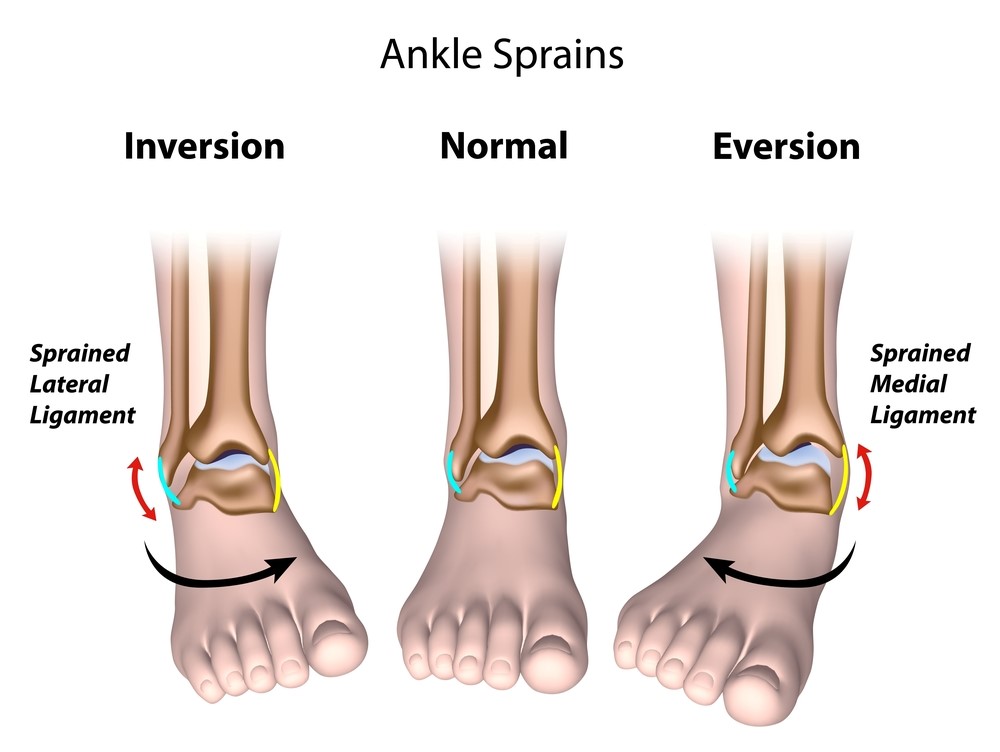
Common Ankle Injuries- Achilles Injuries
- Overuse
The Achilles is the largest tendon in the human body and connects your calf muscle to the heel bone (calcaneus). Inflammation and thinning of the tendon can occur as a result of repeated overuse (i.e. jumping sports, prolonged standing). Symptoms can include an increase pain first thing in the morning that improves with movement, throbbing/swelling/redness and heat after activity and tenderness over the tendon. Modification of training regimes, footwear and modified rest are often required to facilitate recovery.
- Tear/Rupture
Achilles tears and ruptures normally occur as a result of suddenly “taking off ” on the affected leg (i.e. suddenly sprinting, jumping, changing direction). People normally report hearing an audible ‘pop’ or thought someone had thrown a cricket ball at the back of their leg. Signs and symptoms can include pain over the Achilles tendon, a limited/inability to point the toe or push off the toe during walking and a palpable divot in the tendon. It is best to seek urgent medical attention in these situations as surgical intervention may be required.
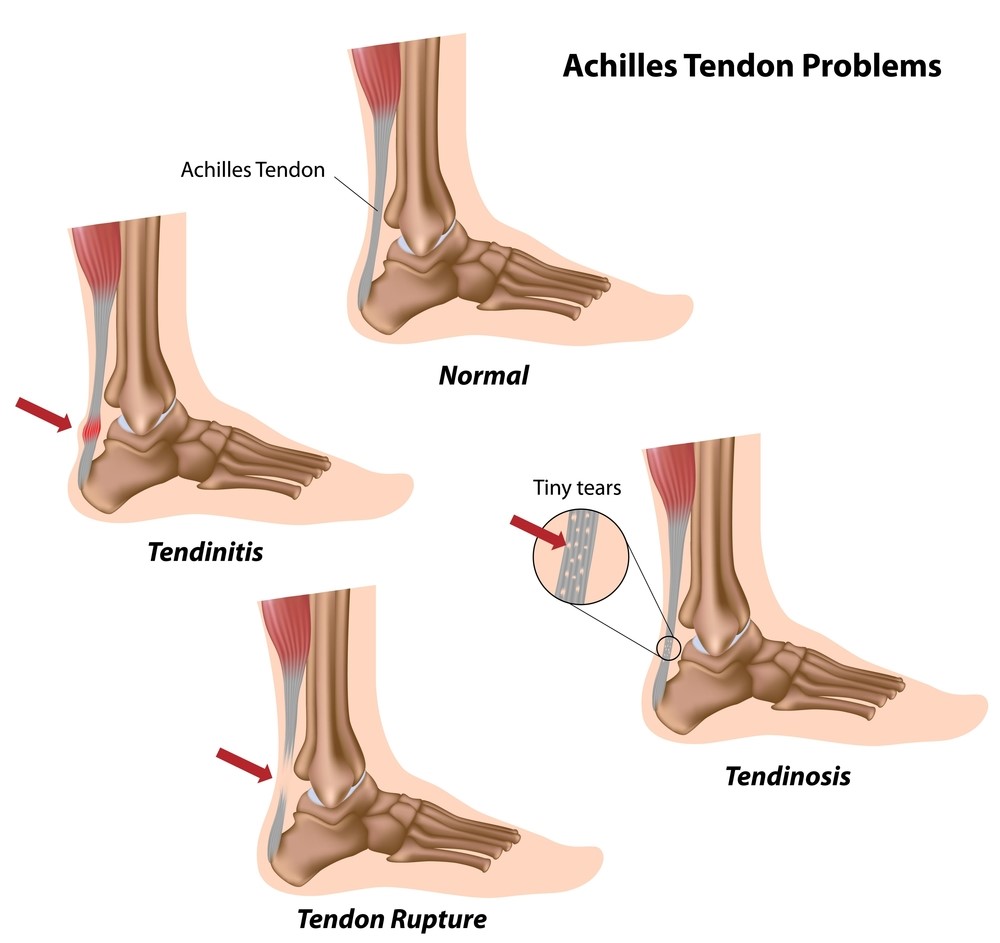
Common Ankle Injuries- Achilles Bursitis
A bursa is a fluid filled sac found in areas of the body where a tendon or muscle rubs over a bone. The function of a bursa is to decrease the amount of friction, if the bursa becomes inflamed it can swell causing compression and pain in the surrounding anatomical structures. Close to where the Achilles tendon inserts onto the heel bone are 2 bursae. It can be difficult to distinguish between an Achilles tendinitis and bursitis as the symptoms are essentially identical, the good news is the management is also very similar.
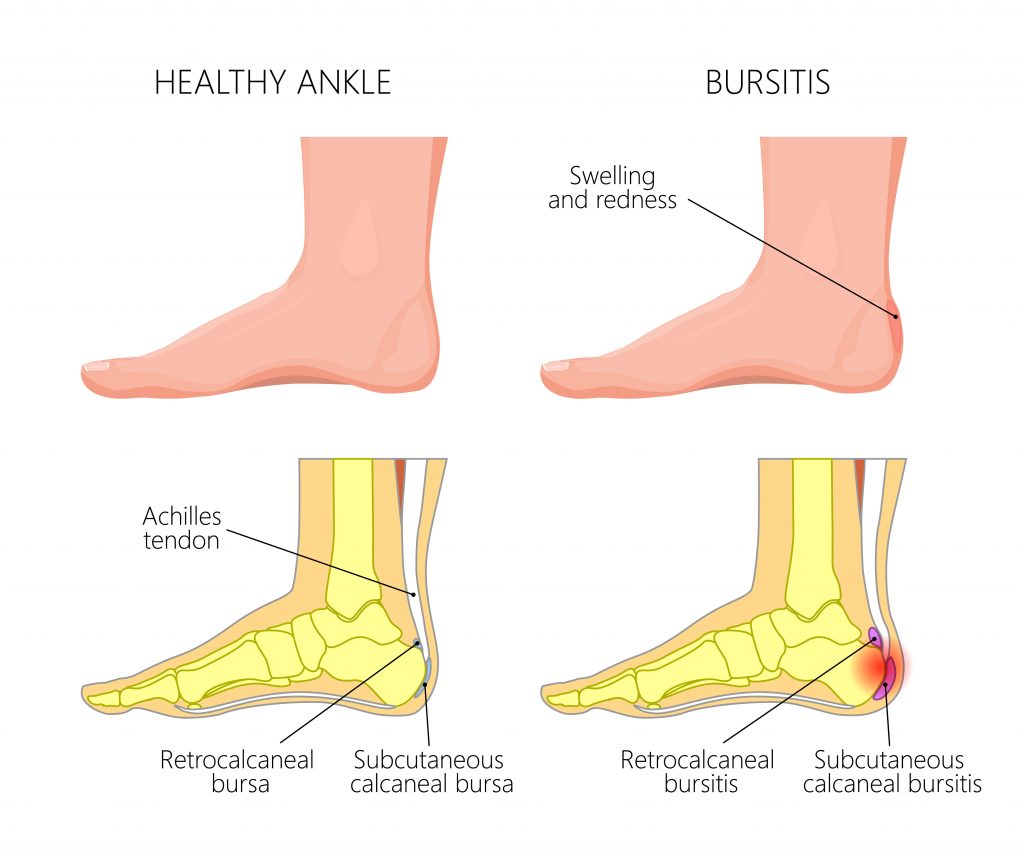
Common Ankle Injuries- Tendinopathy
Similar to the Achilles tendon, inflammation and thinning of the other surrounding ankle tendons can occur as a result of overuse. Commonly affected tendons include:
-Tibialis Posterior Tendon (TPT), this tendon helps to maintain the arch of your foot and pushing off during walking/running/jumping.
-Flexor Hallucis Longus Tendon (FHLT), this tendon helps flex the big toe and pushing off during walking/running/jumping.
-Peroneal Tendon (PT), this tendon helps prevent the ankle from “twisting” and pushing off during walking/running/jumping.
Specific symptoms can include pain over the affected tendon and pain with the associated action.
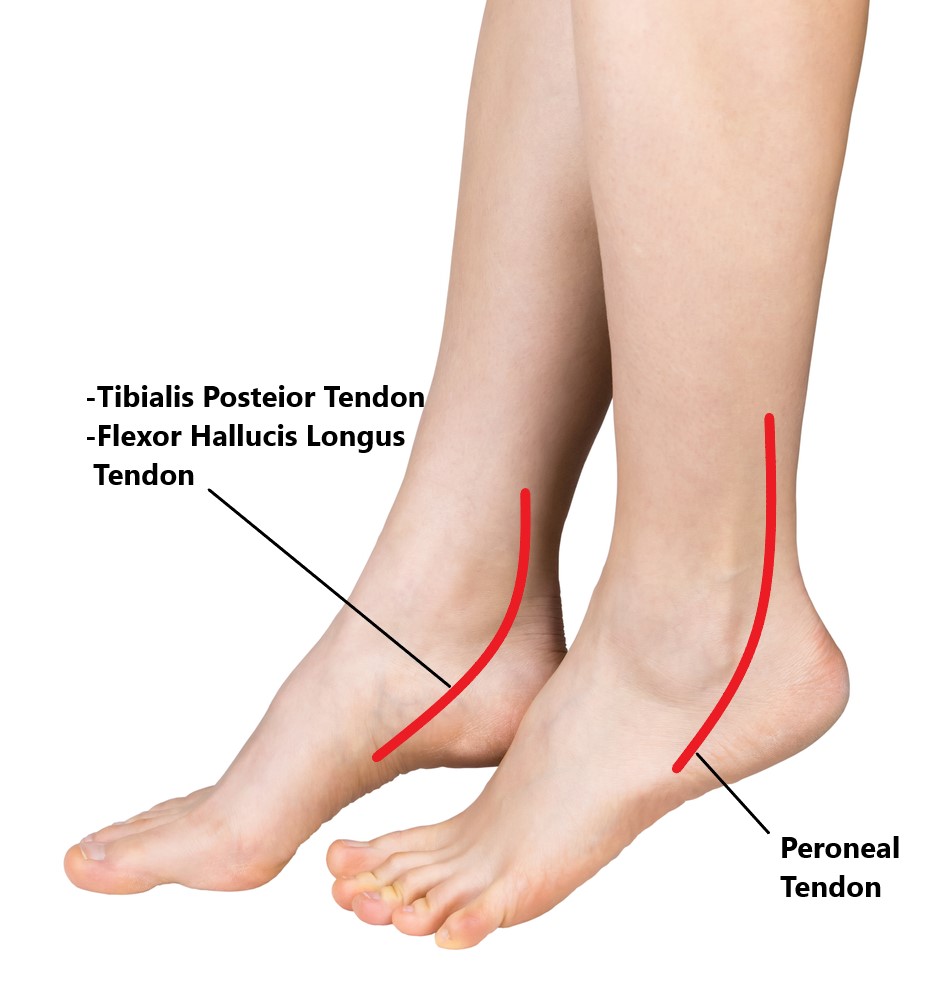
Common Ankle Injuries- Fractures
Ankle fractures are normally the result of sudden impact (i.e. landing heavily on the foot) or badly twisting an ankle. Symptoms can include severe pain, swelling, deformity, loss of function, bony tenderness, foot numbness, weakness and instability. Fractures involving the joint surfaces have more complications and can predispose people to an early onset of arthritis.
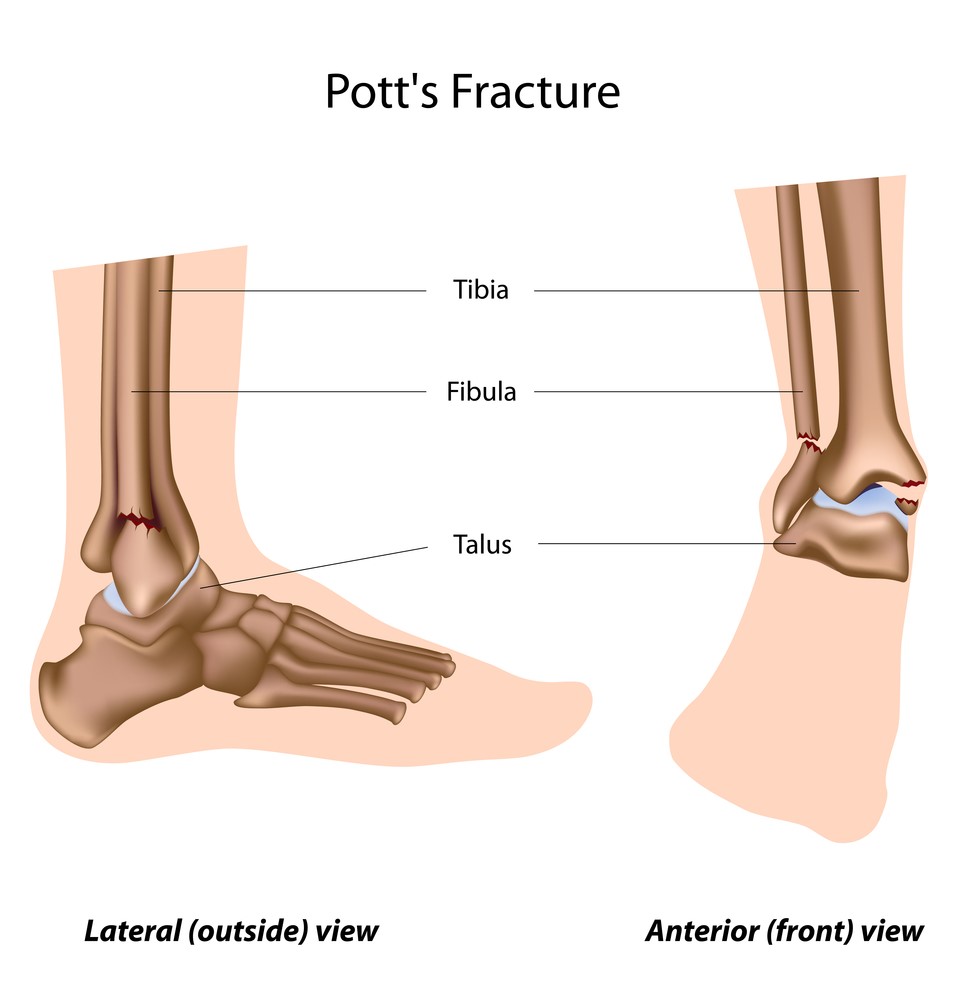
Please keep in mind the information provided is general in nature and should not be used as a substitute to consult your treating health professional. If you have any specific questions or require assistance with your individual treatment requirements please do not hesitate to contact My Family Physio Northern Beaches Sydney.
Related Articles